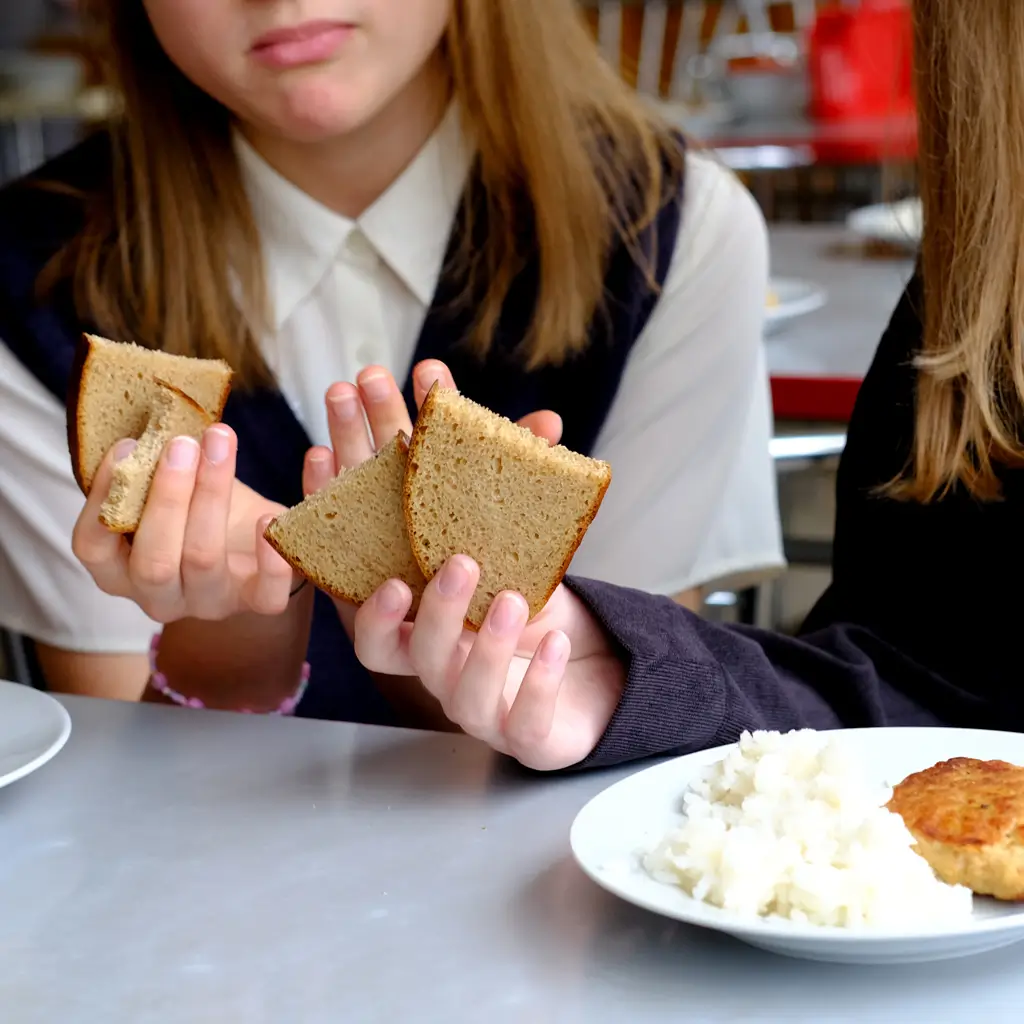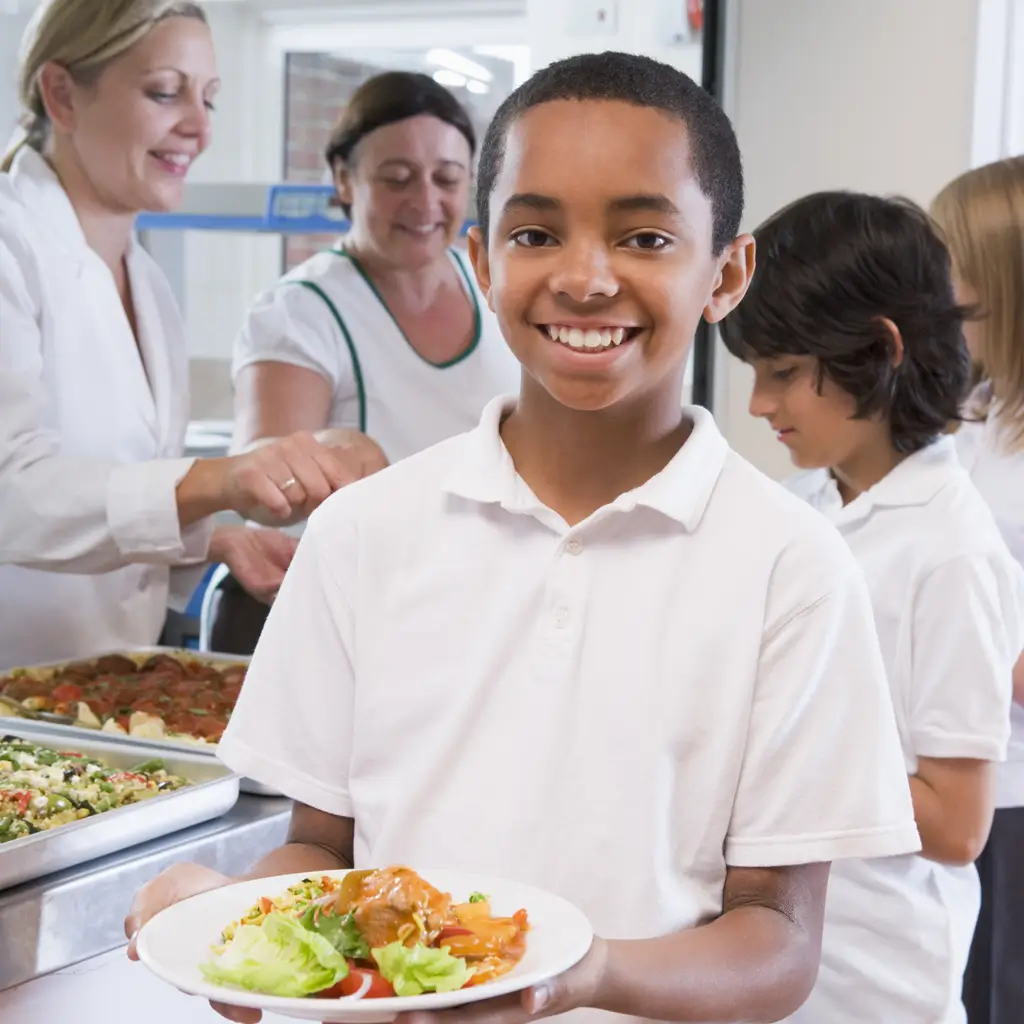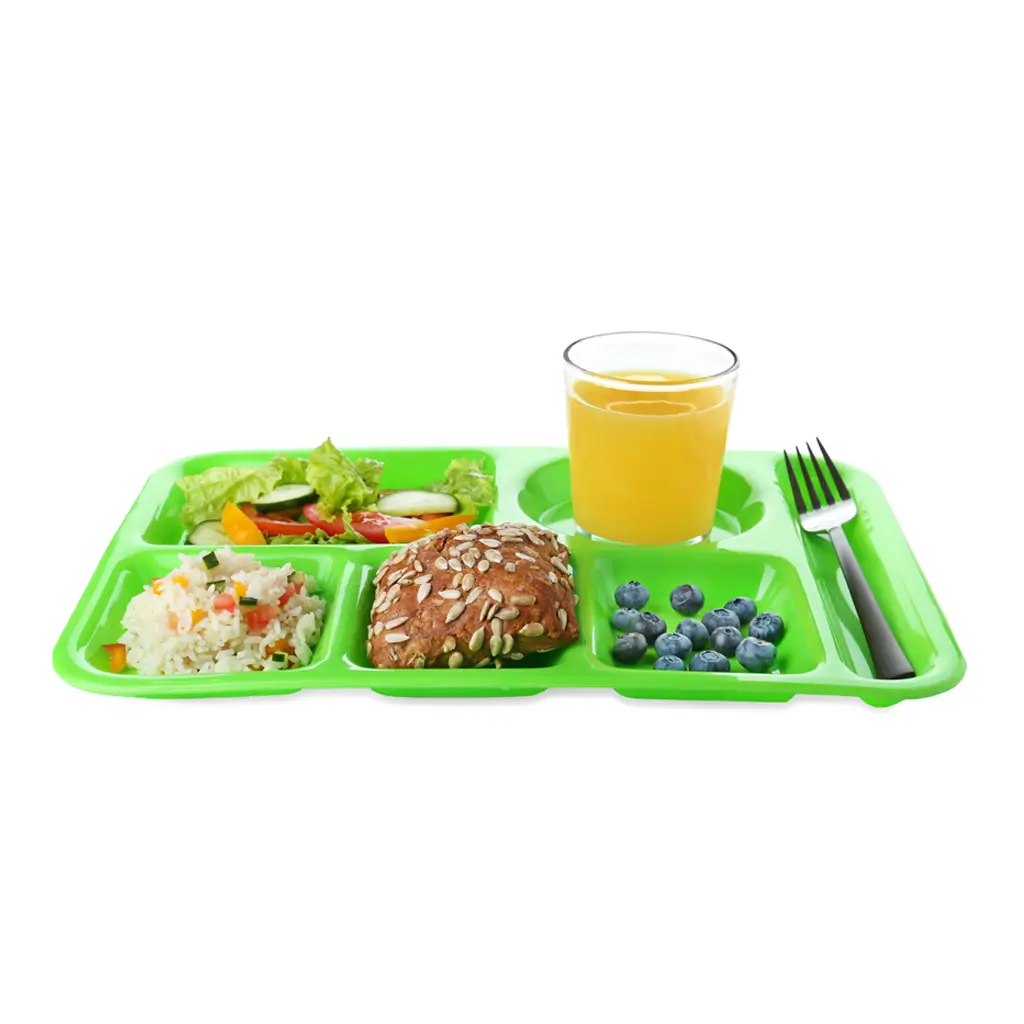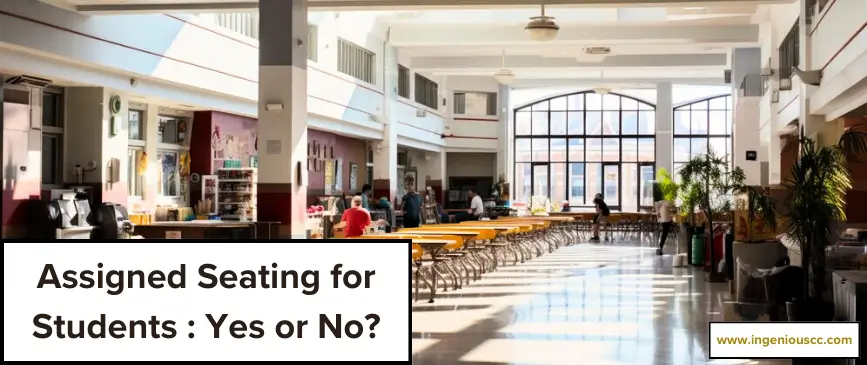Introduction
School cafeterias are the sparks of the school where children amuse, communicate, eat, and relax their selves. But what makes them so important to students? Obviously, it’s me and we time they cherish there. But there is another thing that drives the cafeteria fondness to their hearts- it’s the lunch.
But let’s be honest; not all school lunches hit the mark. Research suggests that school lunches sometimes pale in comparison to homemade meals. Yet, they remain essential for busy parents and students alike. So, how can we make these meals better? That’s what we are here for!
In this guide, we’re diving into the challenges and importance of healthy meals and, most importantly, providing practical tips to level up school cafeteria food. Prepare to dish out severe upgrades and give students a taste of improvement with every bite. Let’s dive in and make those lunch breaks indeed something to savor!
Suggested reading → How To Promote Healthy Eating in School
School Lunch: Problems And Issues
Cafeteria food is often not very good for a bunch of reasons. Where lunchtime is essential at school, in the same vein, making lunch great is challenging for many schools. They face lots of problems, like needing more money, eating ingredients that aren’t very healthy, and having limited choices for what to serve.
These issues all boil down to a tough nut to crack for schools, leaving them scrambling to serve tasty and nutritious meals. Let’s peel back the layers and quickly examine some of these hurdles.
Budget Constraints
The first and most significant problem is that schools need more money to spend on food because they use most of it to pay staff and keep the school clean and working. So, they can only sometimes afford good food and have to buy whatever food fits their budget, even if it’s not the best.
Resource Shortages
Likewise, many schools can’t buy new kitchen stuff or hire enough workers because they are tight on budget. Old kitchen stuff makes it hard to cook fresh meals, and having fewer workers means they can only produce a few different kinds of food. Even though they need upgrades, they can only afford them if the school authorities need more cash balance.
Inadequate Kitchen Facilities
Some schools have small, old kitchens that aren’t good for making meals for many students. They need more space or tools to cook correctly. Also, they might need the right stuff to make different meals, so they serve the same things repeatedly. This makes it challenging for the kitchen staff to be creative and create healthy food.

Lack of Culinary Training
Another major hindrance to healthy and quality cafeteria lunch is that the people who work there don’t always know how to cook healthy meals. Plus, they don’t get the chance to learn because the management has less money and resources for training. So, they just follow the school’s basic food-making rules, even if it’s not the healthiest.
Suggested reading → National School Lunch Program – What It Means for Your School Cafeteria.
Nutritional Imbalance
Schools mainly focus on reducing calories, fat, and salt in food. But they forget that it’s essential to balance all the nutrients in the kid’s meals to enhance their mental learning and nourishment rather than just focusing on cutting down on a few things. Other nutrients like protein and carbs are also necessary to build a healthy kid’s life.
Cost-Efficiency Over Quality
In school cafeterias, saving money is usually the primary goal. Their focus is often on minimizing costs rather than prioritizing taste and nutrition. This results in subpar food quality below standards.
Limited Supplier Options
A few big companies provide most of the food for schools. Because of this, schools don’t have many options and can’t always pick the best ingredients. Sometimes, they have to take things off the menu or use cheaper ingredients because they need help to afford the better ones. This makes lunchtime meals less varied.
Understaffing Challenges
Following the above complications, some schools need more people to work in the kitchen, making preparing and serving meals challenging. They might have to change how they serve food or remove some options because there aren’t enough workers. This limits the variety and makes it hard for everyone to get the food they want.
Space Limitations
Sometimes, schools need more room in the kitchen or storage areas. This makes it harder for workers to get things done efficiently. They might have to spend more time moving things around or finding space for ingredients, which can slow things down, leading to a lack of focus and unhealthy food.
Suggested reading → How to Create the Best High School Cafeteria?
The Benefits Of Improving School Lunches
Healthy school lunches offer many incredible benefits beyond just filling the belly. Here’s our breakdown of them into three main categories.
Academic Boost
Eating nutritious meals helps the brain work better, making learning and scoring well on tests easier.
Healthier You
Good food keeps students strong and feeling great, so they can focus more on learning and less on feeling tired or sick.
Better Behavior
Eating right aids in staying cool, calm, and collected in class, making it easier to pay attention and get along with others.

Want to be more specific? Let’s dig deeper into healthy school lunches and all the benefits they bring–literally and figuratively!
Advantages Table |
||
| Academic | Health | Behavior |
| Enhanced memory | Enhanced diet quality | Better social skills |
| Higher IQ | Reduced risk of chronic diseases | Decreased irritability |
| Better retention | Body Mass Index: Regulation, maintenance | Improved mood stability |
| Enhanced thinking and learning outcomes | Enhanced immune function | Enhanced peer interactions |
| Higher engagement | Optimal hydration | Higher energy levels |
| Better writing | Better digestion | Contentment and sociability |
| Increased interest | Reduced risk of foodborne illnesses | Enhanced participation |
Suggested reading → Nutrition, Education, and Community: Exploring the Impact of School Cafeterias
How To Improve School Lunches

Why is upgrading school food so vital? Because it directly impacts students’ health and learning abilities. As a student who loves food and will eat almost anything, cafeteria meals mustn’t be just palatable but also nutritious. But look at the tray below, does that lunch really scream healthy to you?
At Ingenious Culinary Concepts, we’re passionate about framing cafeteria experiences that delight and nourish students. And being on our aim, we’ve curated a collection of the top 15 strategies to transform your lunchroom into a haven of delightful flavors and wholesome goodness.
Suggested reading → Food Safety 101: Simple Steps for Healthy School Cafeterias
For School Authorities
Keep It Clean, Fresh, and Hot: Start by ensuring it’s squeaky clean. Regularly wipe down those lunch line areas, swap out dirty utensils, and sweep those floors well. And remember, spray cleaners onto cloths, not directly onto surfaces, to avoid contaminating the food.
More Extended Lunch Periods: Ever notice how rushed it can feel for students? Hence, give them more breathing room. Extend those lunch periods to at least 30 minutes. More time means happier bellies and better focus in the classroom.
Enhance Food Presentation: Make lunchtime exciting. Think colorful veggie finger foods that grab attention and entrees with fun, catchy names. Illustrate signs and symbols and give cute dish names explaining the nutritional lowdown of each dish.
Understand Ingredient Sources: Think local when it comes to sourcing the ingredients. Sure, national distributors are convenient, but nothing beats the freshness of locally sourced produce. Support your community and give your students a taste of the region’s best.
Read our school cafeteria guide on Big Eight Food Allergens.
Encourage Student Input: Students’ opinions matter. Right? Set up a feedback system to give them a say on the menu. Listening to their preferences ensures the lunch offerings are a hit with the whole school community.
Define Rules and Expectations for Students: Set the stage for a smooth and enjoyable mealtime for all. Clear rules mean less chaos and more munching. Create a cafeteria environment that fosters respect and inclusivity, from proper etiquette to waste disposal.
Train Cuisine Staff: Proper training is critical. Provide proper training and certification to the cafeteria staff to ensure they can prepare delicious and nutritious meals. With a well-trained team, you can serve up smiles with every dish.
Hire our staff training services today!
Make the Canteen Environment Inviting: Give the cafeteria a makeover. Comfortable seating, inviting decor, and a welcoming vibe make lunchtime the day’s highlight. After all, a happy environment means happy eaters.
Want to update your cafeteria into a haven of comfort and joy? Boost lunchtime experiences and amplify morale with our expert cafeteria designing and renovation services. Reach out today to bring smiles to your cafeteria-goers!
Eat Green, Go Green: Make the cafeteria a green oasis. Introduce salad bars in the first serving lines, swap out plastic for biodegradable options, opt for locally sourced, organic options to reduce your carbon footprint, and embrace composting. By reducing waste and promoting sustainability, you will feed bodies and nurture the planet.
For Parents
Encouraging Healthy Conversations with Children: Chat with our kiddos about healthy eating. Take them shopping and let them pick out fruits and veggies they’ve tried at school. This activity and adventure will make healthy habits stick.
Model Healthy Behavior: Lead by example and show your kids how it’s done. Whether packing lunches or trying new foods, your actions speak volumes.
Implement Healthy Choices at Home: What about bringing the cafeteria to the home? Sounds nice. Incorporate school lunch options into your family meals. This way, you will support the school’s nutrition efforts and keep your kids fueled up for success.
Participate in School Initiatives: Get involved in the school’s lunchtime fun. From volunteering at events to spreading the word about healthy eating, every little bit helps. With school, management makes those lunchtimes the best day of the time.
Utilize Social Media: Spread the word about school lunches. Share photos, tips, and recipes on social media to inspire other parents. Create a buzz about healthy eating that’s too good to ignore.
Wrapping Up
As we wrap up this guide, remember that making school lunches great isn’t just one person’s job. It takes parents, teachers, and communities working together to help our kids thrive. It might take some time, but the results will be worth it. We hope our ideas make lunches at your school awesome.
Deep down, don’t forget: serving up healthy lunches isn’t just about the food. It’s about setting our kids up for success in the future. So, prioritize healthy school lunches for a happier, more brilliant student body.
FAQs
Why do schools sometimes struggle to make tasty and healthy lunches?
Schools have problems like insufficient money, old kitchens, and staff who may need to learn how to cook healthy food, making it hard to serve good meals.
Why is it essential for schools to think about being eco-friendly with their lunches?
Being eco-friendly means using local ingredients, reducing waste, and caring for the environment. It’s essential because it helps make lunches healthier and also helps the planet.
How can schools make their food healthier?
Schools can use more fruits, vegetables, and good foods like whole grains and lean meats. They can also use less sugar, salt, and unhealthy fats in meals.
How can schools help kids with allergies or food problems?
Schools can give different food options for kids with allergies, tell what’s in the food clearly, train staff to keep food safe, and work with families and doctors to make unique food plans.
What if schools don’t have much money to improve food?
Schools can still get healthy food by buying fruits and veggies when they’re in season, buying in big batches, working with local farms, and not wasting food. They can also look for grants and support from the community.


